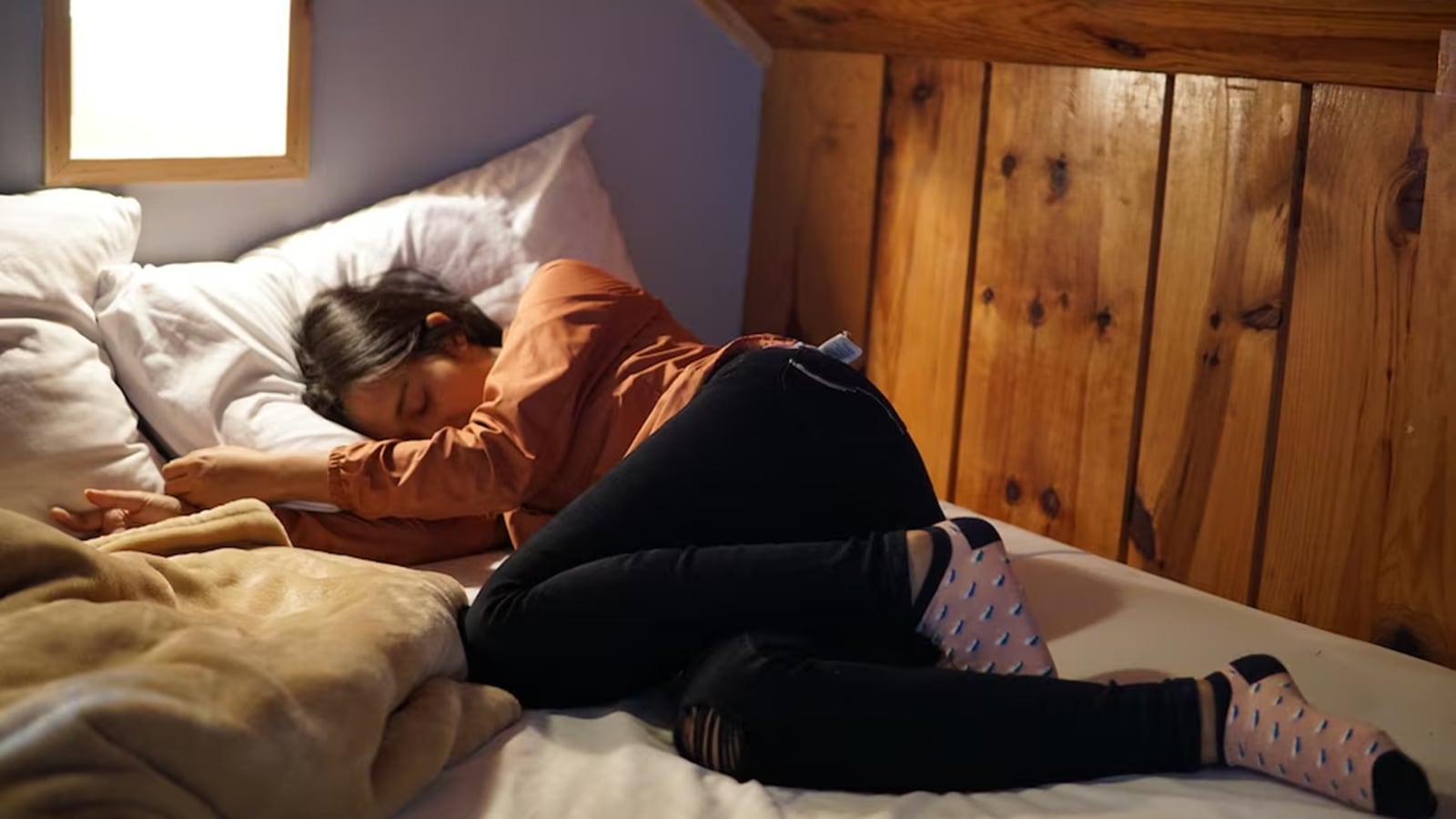“My grad school had free therapy. If it didn’t, I would have failed,” N Dhar, 25, said about living with treatment-resistant depression. And she isn’t exaggerating. Even brushing her teeth felt impossible some days, so she swished mouthwash instead. Meals were replaced with bananas. Showers gave way to simply changing into clean clothes and slapping on strong deodorant. These weren’t acts of laziness or self-pity; they were lifelines, micro-strategies for surviving when your brain insists it’s over… again.
In India, mental health challenges are often dismissed as “just stress” or “bad days,” with structured support remaining scarce or unaffordable. For Dhar, diagnosed with depression in 2019 after years of silent unravelling, treatment resistance was a brutal reality. “I was always depressed—even before I knew what depression was,” she said, recalling vague childhood memories of unexplained sadness as early as third grade. “It was like being homesick for another world. But I was only seven. What other world could I even know?”
Dhar’s story is both deeply personal and strikingly familiar. Diagnosed with depression in 2019, after years of silently unravelling, she found that medication after medication failed her. “I was always depressed—even before I knew what depression was,” she says, describing childhood memories of unexplained sadness as early as the third grade. “It was like being homesick for another world. But I was only seven. What other world could I even know?”
Dhar is part of a growing population in India grappling with treatment-resistant mental disorders (TRMD) —a term that sounds clinical but carries a heavy human cost. For these individuals, healing isn’t a straight line. It’s a maze full of trial and error, high financial stakes, misunderstood pain, and a healthcare system often ill-equipped to help.
What does treatment resistance really mean?
According to Vikram Kirtikar, senior psychologist at Mpower The Centre, Mumbai, “A treatment-resistant mental disorder is defined as a mental health condition that does not respond to conventional forms of treatment, including medication and psychotherapy. The failure of two or more evidence-based treatments, despite proper adherence, often raises red flags.”
This resistance can manifest in depression, anxiety, bipolar disorder, schizophrenia, and obsessive-compulsive disorder (OCD). Patients may undergo multiple pharmacological treatments and various therapy modalities like cognitive behavioural therapy (CBT) or interpersonal therapy (IPT) yet show little to no improvement.
Vishnu Priya J, a consulting psychologist and CEO of Aathma The Healing in Trivandrum, said, “It’s not just about treatment failure—it’s about the psychological toll of constantly feeling like you’re fighting an uphill battle. I had a patient, Chithra (name changed), who underwent therapy and medications for years without progress. Her deep anxiety and depression, despite best practices, exemplify treatment resistance.”
Story continues below this ad
The lived experience: Stigma, isolation, and disruption
“Life with treatment-resistant depression is just charmless,” Dhar said. “Sometimes, I don’t even have the imagination to have dreams.” For her, the diagnosis offers a strange form of validation: “Before, people dismissed my sadness. Now, with the paper, it’s as if my sadness is authenticated.” Yet validation is not the same as support.
Accessibility remains a major hurdle—therapy costs are high, availability of medications is inconsistent, and stigma persists even at the chemist’s counter. “In places like Chennai and Guwahati, I couldn’t access common selective serotonin reuptake inhibitors (SSRI), common antidepressants. Sometimes, the chemist even questioned if the meds were ‘really’ for me,” she said.
 Often, a patient may undergo multiple pharmacological treatments and therapy modalities like CBT or IPT, but show minimal to no improvement. (Source: Freepik)
Often, a patient may undergo multiple pharmacological treatments and therapy modalities like CBT or IPT, but show minimal to no improvement. (Source: Freepik)
For people like Dhar, the disorder disrupts every aspect of life. “The worst part wasn’t the symptoms,” she said, “it was being told I should be getting better. When I didn’t, people assumed I wasn’t trying hard enough.” Basic tasks become monumental struggles, social relationships suffer, and educational or career paths stall. The result is often profound isolation.
Priyamvada Tendulkar, a clinical psychologist, stressed the hidden weight of such conditions: “For treatment-resistant patients, it’s not just about not feeling better—it’s about losing faith in the very systems meant to help them. It leads to self-doubt, shame, and disconnection from the world.”
Story continues below this ad
Kirtikar said, “Chronic mental health issues can alienate individuals from their communities and families. The stigma attached to ‘not getting better’ only worsens their isolation.
Resistance is more than diagnostic challenges and medication
Treatment resistance is not solely about medications that don’t work. Sometimes, TRMDs remain undiagnosed for years due to misdiagnosis or overlooked underlying medical issues—such as thyroid disorders or vitamin deficiencies. “Revisiting the diagnosis is crucial. A proper evaluation should include a thorough review of treatment history, ruling out comorbidities, and sometimes rethinking the diagnosis altogether,” Kirtikar said.
 A treatment-resistant mental disorder is defined as a mental health condition that does not respond to conventional forms of treatment, including medication and psychotherapy (Source: Freepik)
A treatment-resistant mental disorder is defined as a mental health condition that does not respond to conventional forms of treatment, including medication and psychotherapy (Source: Freepik)
Vishnu Priya said, “When a patient shows no improvement after multiple treatments, we must reassess everything—from the diagnosis to the delivery of treatment.”
The concept of “resistance” itself is layered. It could arise from biological differences, trauma histories, genetic vulnerabilities, or even environmental factors such as ongoing stressors or lack of support systems. Yet this clinical framing, although useful, can feel soulless. “We must ask: resistant to what? A protocol? Or resistant to not being seen?” Tendulkar said. For many, resistance is not about biological non-responsiveness alone; it’s the result of years of misdiagnosis, unaddressed trauma, and a lack of truly compassionate care.
Story continues below this ad
Take Dhar’s case, for instance. Since her diagnosis in 2019, she has cycled through nearly every class of antidepressants—SSRIs, Serotonin-norepinephrine reuptake inhibitors (SNRI), and atypicals like bupropion—with no sustained relief. “Each psychiatrist visit is no less than Rs 1,500 and every trial takes weeks. It does feel like you’re blowing money and time. I wish I could ask for a refund,” she said, half in jest.
Tendulkar explained that after years of being mislabeled or under-supported, some clients not only lose faith in the treatments but also in the very possibility of healing. She recounts a client who ceased to speak in therapy after receiving seven mismatched diagnoses in five years. “She was labeled ‘resistant,’ but in truth, she suffered from complex post-traumatic stress disorder (PTSD). No one ever asked, ‘What happened to you?’”
This disconnect between clinical labels and lived experience can inflict wounds deeper than the disorder itself. In India, where trauma literacy is still emerging—even among professionals—the risk of further harm is significant.
 Psychologists urge families and friends to offer presence, not prescriptions (Source: Freepik)
Psychologists urge families and friends to offer presence, not prescriptions (Source: Freepik)
Support beyond a ‘cure’
Treatment-resistant depression often strains relationships. When recovery stalls, loved ones may feel helpless. “What breaks the loop isn’t magic—it’s attunement and radical acceptance,” said Tendulkar. She encourages presence of friends and family over prescriptions and celebrating small wins—sleeping well, journaling, walking—over chasing a cure.
Story continues below this ad
For Dhar, that support looks like grace during ghosting periods, and an understanding of her irritability. But she’s also trying to meet her loved ones halfway—by improving her own communication and setting realistic expectations. She talks about the “unsexy truths” of self-care. “Yes, being depressed is not my choice, but it remains my problem. I want to take some agency to solve it, like a diabetic person managing their blood sugar. Ambitious, yes, I know,” she said.
Despite the grim prognosis, there is hope. “Living with a treatment-resistant disorder doesn’t mean living a joyless life. It means finding a new language for survival—through community, creativity, or alternative practices like mindfulness, nature therapy, or body-based interventions,” said Tendulkar.
The goal in treatment-resistant disorders may not be to eliminate symptoms. “You redefine recovery not as ‘no pain’ but as ‘living with pain and still loving life’,” said Tendulkar. This reframing—of befriending the self rather than fixing it—is central to long-term healing.
Vishnu Priya echoed this sentiment: “We may not always achieve full remission, but we can aim for management, resilience, and meaning. The goal shifts from ‘cure’ to ‘coping with dignity’.”
Story continues below this ad
The road ahead
Tendulkar said, “The only way to serve someone in that dark place is to sit with them in it. To say: ‘I see you. You’re still worth fighting for’.”
Treatment-resistant mental disorders are not an endpoint; they are detours––painful, confusing, and lonely. They challenge us to reconsider what healing looks like. They call for a deeper commitment—from families, clinicians, and systems—to see people as more than diagnoses.
As India’s mental health movement evolves, we owe it to voices like Dhar’s to hold space for complexity. Because healing isn’t always about becoming symptom-free. Sometimes, it’s just about finding the will to try again tomorrow. Even in the shadows.

